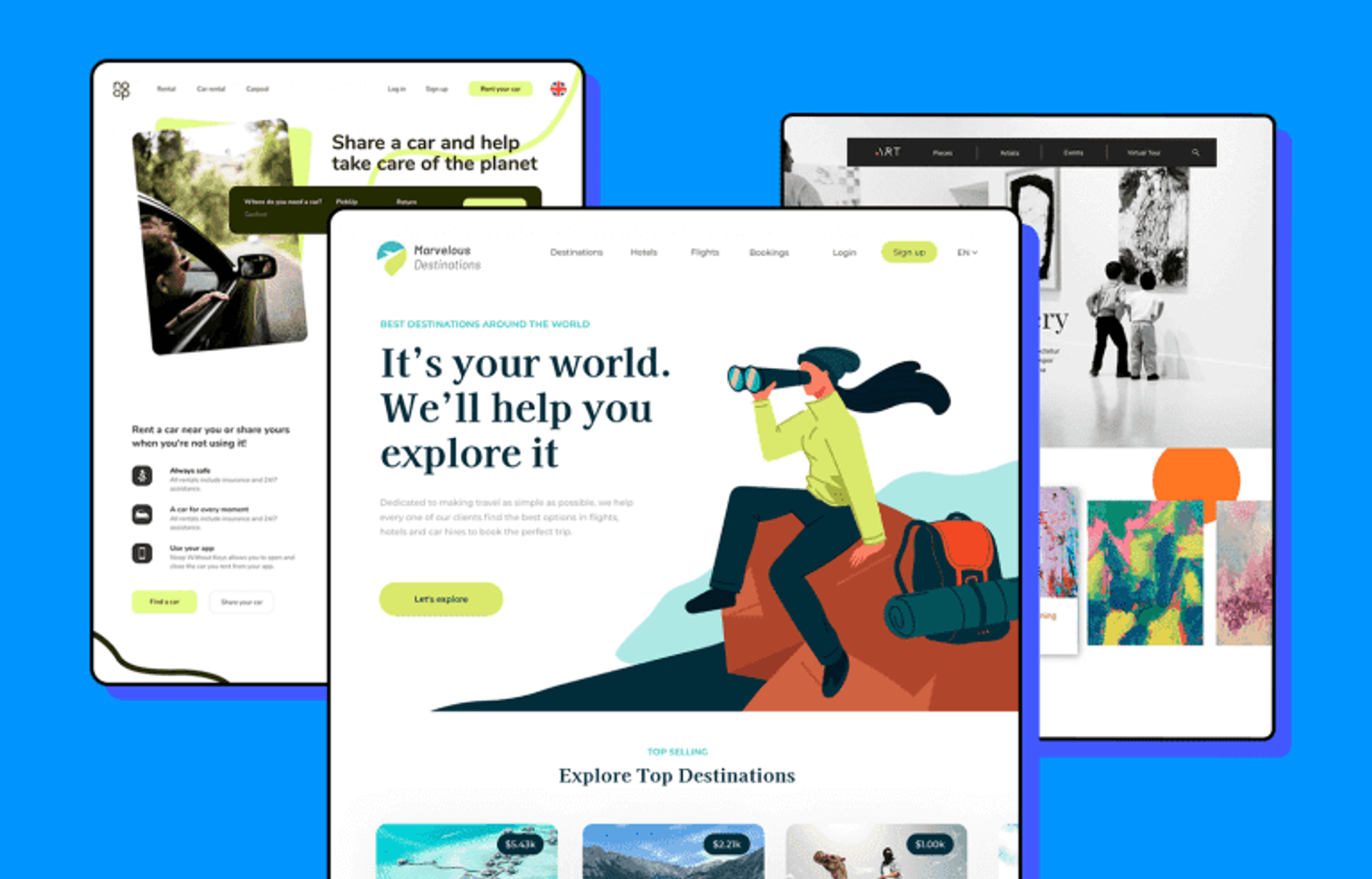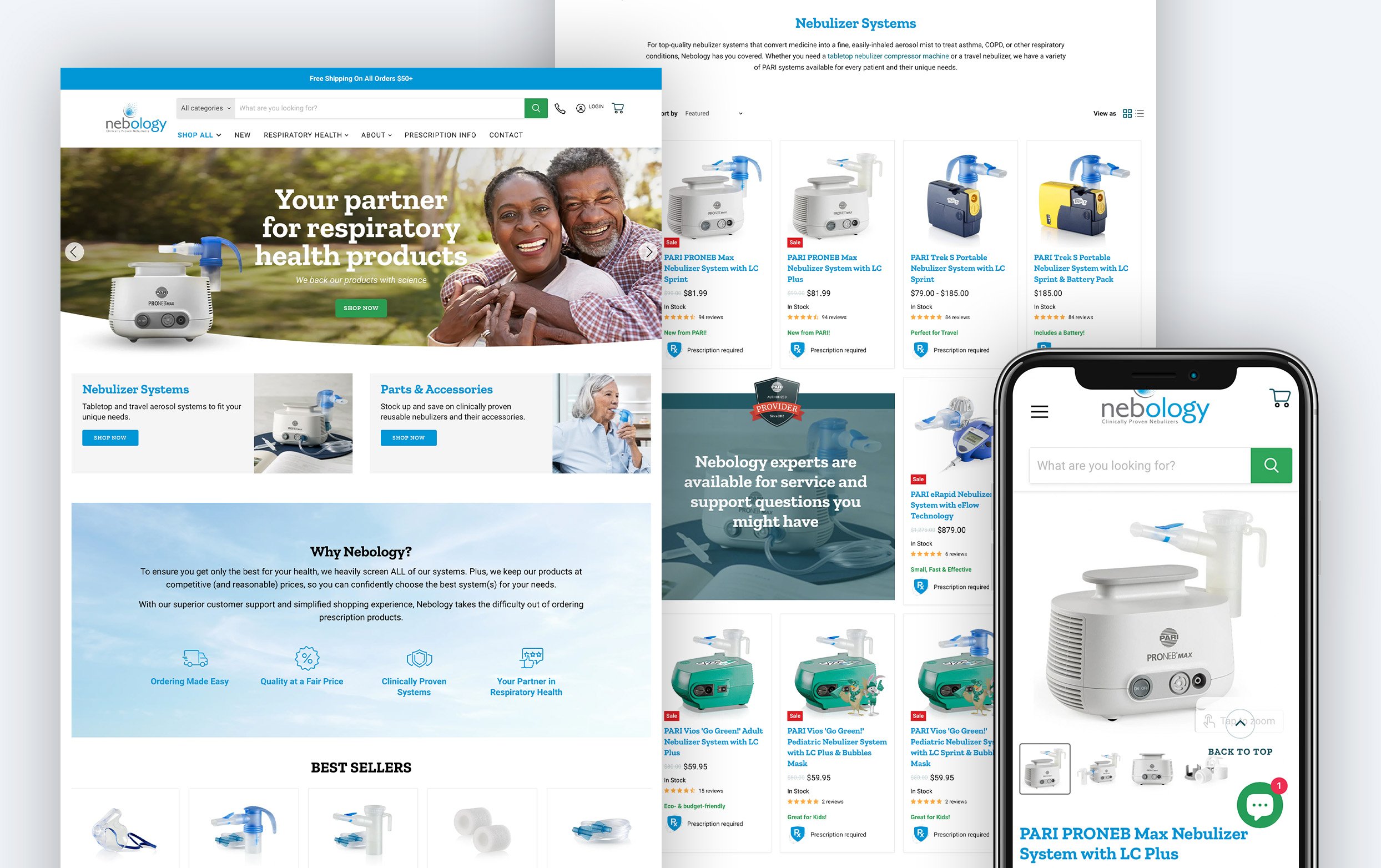How AI Is Revolutionizing Web Design South Africa for Small Businesses
The Necessary Aspects of Effective Web Design: A Comprehensive Guide
Efficient website design includes numerous critical aspects that greatly effect user experience. It requires mindful consideration of elements such as mobile responsiveness, user-friendly navigation, and visual power structure. Each part plays a necessary role in crafting a web site that not only brings in site visitors but also keeps them. Comprehending these foundational aspects is crucial for organizations intending to improve their on-line presence. Yet, what absolutely differentiates an effective website from its competitors?
Understanding Customer Experience (UX) Design
User experience (UX) Design acts as the foundation of efficient web Design, concentrating on how customers interact with an internet site. It includes different components, including use, access, and general complete satisfaction. A successful UX Design begins with customer research, identifying the target audience's needs and actions. Wireframes and models are after that created to imagine the internet site's structure and flow. Seo Company Klerksdorp. Examining with actual individuals supplies important understandings, allowing designers to fine-tune the user interface and boost navigating. Aesthetic Design elements, such as typography and shade systems, enhance the general visual while supporting performance. Eventually, reliable UX Design guarantees that users can easily complete their objectives, fostering engagement and commitment. By prioritizing user experience, internet sites can accomplish greater conversion rates and a favorable credibility
Value of Mobile Responsiveness
As mobile devices significantly dominate web use, guaranteeing mobile responsiveness has ended up being essential for reliable website design. Web sites that are not enhanced for mobile can cause a bad individual experience, leading to greater bounce prices and shed opportunities. A mobile-responsive Design allows web content to adapt perfectly to different display dimensions, making sure that customers can access information conveniently, despite the tool they use. In addition, online search engine prioritize mobile-friendly internet sites in their rankings, making responsiveness a vital factor for exposure and traffic. With a growing variety of customers accessing the net via smartphones and tablets, services need to spend in mobile responsiveness to improve user engagement, improve brand name perception, and ultimately drive conversions. Effective website design have to focus on mobile responsiveness to stay competitive in today's electronic landscape.
Crafting Intuitive Navigating
Navigation acts as the foundation of any kind of efficient web site, directing site visitors with content with convenience. An instinctive navigation framework enhances user experience by enabling customers to find information rapidly and efficiently. Clear labeling of food selection items is essential; it should reflect the material accurately, avoiding jargon that may perplex users. Furthermore, a sensible hierarchy is critical, making it possible for users to determine connections between different sections. Consistency across pages aids strengthen expectations, while breadcrumbs offer context and a feeling of instructions. Responsive navigation food selections that adjust to various devices even more enhance access. Inevitably, the objective is to produce a seamless trip for site visitors, guaranteeing they can check out the website without disappointment, causing an extra engaged and completely satisfied audience.
Making Use Of Aesthetic Pecking Order
Visual power structure plays an essential function in internet Design by guiding customers' interest and enhancing their experience. Reliable design methods, along with thoughtful selections in color and typography, can greatly affect just how details is perceived and refined. Recognizing these aspects is necessary for creating functional and aesthetically attractive sites.
Value of Visual Pecking Order
Efficient web Design hinges on the idea of visual power structure, which guides users with web content in a rational and user-friendly manner. This concept is essential for improving user experience, as it aids focus on information and directs attention to necessary elements. By establishing a clear pecking order, web developers can ensure that customers easily identify essential messages, phones call to action, and navigation choices. A well-structured visual hierarchy reduces cognitive tons, enabling customers to process information efficiently. Additionally, it cultivates involvement by developing an attractive format that welcomes expedition. Ultimately, recognizing the relevance of visual hierarchy is essential for any kind of internet developer aiming to develop straightforward and reliable sites that successfully communicate their desired messages.

Methods for Reliable Layout
A well-organized format works as the backbone of any type of effective internet Design, enabling customers to easily navigate via content. Effective methods include grid systems, which offer a structured framework for aligning aspects, guaranteeing uniformity and equilibrium. Additionally, making use of whitespace purposefully can improve concentrate on essential areas, lowering aesthetic mess and guiding individual focus. Focusing on web content via dimension and positioning further stresses essential details, while contrasting components can create a clear aesthetic pecking order. Implementing receptive Design methods warranties formats adapt perfectly throughout devices, maintaining use. Integrating instinctive navigating aids, such as menus and switches, boosts user experience, making it less complicated for visitors to locate relevant details promptly. With each other, these methods form the structure of an efficient web design.
Color and Typography Choices
While shade and typography choices might appear like straightforward Design aspects, they play a necessary function in establishing go to this website visual pecking order on a site (Internet Advertising In South Africa). Shade can assist users' attention, set apart areas, and communicate brand identity. By purposefully making use of contrasting shades, developers can highlight essential phone call to action, ensuring they attract attention. Typography, on the various other hand, affects readability and user interaction. An appropriate typeface can convey tone and individuality, while varying font dimensions and weights can create a clear structure. Bigger, bolder headings attract focus, while smaller sized body text provides comprehensive information. With each other, effective color and typography options create a natural visual experience, leading customers with the material easily and boosting total functionality
Selecting the Right Color Design
How does check out this site one select the perfect color design for a site? Picking the best shade system is essential for improving customer experience and communicating the brand name's message. Developers ought to start by taking into consideration the target audience and the emotions that different colors stimulate. Blue frequently represents trust fund, while red can create necessity. It is necessary to restrict the combination to a few complementary shades to preserve visual harmony and stay clear of overwhelming individuals. Utilizing tools like color wheel applications can assist in selecting shades that work well together. Furthermore, developers need to ensure that there suffices contrast in between message and history shades for readability. Eventually, a well-balanced color design can substantially affect a site's performance and customer engagement.
Integrating Engaging Content

Involving web content is important for recording and preserving the attention of site visitors. It works as a bridge between the site's Design and the user's experience, cultivating much deeper links. Reliable web content frequently consists of a mix of interesting write-ups, charming visuals, and interactive aspects that urge user participation. By using narration methods, websites can evoke feelings, making the material much more relatable and memorable. In addition, incorporating user-generated content, such as testimonials or evaluations, boosts trustworthiness and develops trust with the target market. Clear calls-to-action overview users towards preferred outcomes, ensuring they continue to be involved. Overall, a critical strategy to material development not just enhances user experience but also drives conversions, making it an important aspect of efficient website design.
Enhancing for Rate and Efficiency
Optimizing for rate and efficiency is necessary for boosting individual experience on an internet site. Strategies such as photo compression, minifying CSS and JavaScript, and leveraging browser caching can significantly minimize packing times - Seo Company Klerksdorp. These strategies not just improve performance but likewise add to much better search engine rankings
Image Compression Techniques

Minifying CSS and JavaScript
Although many internet developers focus on picture optimization, minifying CSS and JavaScript is similarly crucial for improving site speed and efficiency. Minification includes eliminating unnecessary personalities from code, such as whitespace, comments, and format, without influencing over here its capability. This process leads to smaller documents sizes, which results in much faster loading times and enhanced individual experience. By reducing the quantity of information moved between the customer and the web server, minification helps minimize bandwidth usage and enhances total site performance. Additionally, search engines prefer much faster websites, which can enhance search positions. Carrying out tools and automated processes for minifying these scripts can enhance web development and maintenance, guaranteeing that efficiency continues to be a priority throughout the lifecycle of a website.
Leveraging Browser Caching
Leveraging web browser caching significantly boosts internet site rate and efficiency by keeping regularly accessed sources in your area on an individual's gadget. This technique lessens the demand for duplicated demands to the web server, considerably reducing loading times for returning site visitors. By utilizing HTTP headers, internet developers can define caching guidelines for different sources, such as stylesheets, photos, and scripts. Properly applied caching strategies allow users to experience faster web page lots, causing boosted individual contentment and engagement. Furthermore, internet search engine favor websites with enhanced performance, possibly increasing search positions. On a regular basis reviewing and taking care of cache setups guarantees that users receive updated material while still taking advantage of the efficiency of cached resources. In conclusion, reliable web browser caching is a necessary component of maximizing internet efficiency.
Frequently Asked Concerns
Exactly how Do I Choose the Right Website Design Tools?

Picking the ideal web Design tools entails examining task needs, comprehending user demands, and evaluating various software functions. Compatibility, simplicity of use, and community support are additionally vital variables to take into consideration for efficient Design outcomes.
What Are Typical Website Design Mistakes to Stay Clear Of?
Usual website design blunders to avoid include messy layouts, inadequate navigation, inadequate mobile responsiveness, slow-moving filling times, and neglecting user experience. Reliable styles focus on simpleness, ease of access, and performance to involve individuals and enhance contentment.
Exactly How Can I Gauge My Web site's Success?
To determine a web site's success, one might examine metrics such as traffic, conversion rates, user interaction, and bounce prices. Making use of tools like Google Analytics can supply valuable insights for recurring optimization and renovation techniques.
What Duty Does SEO Play in Website Design?
Search engine optimization significantly influences internet Design by making sure that web sites are structured for search engine exposure. This includes maximizing website speed, mobile responsiveness, and content quality, ultimately boosting customer experience and driving natural traffic.
How Usually Should I Update My Internet Site Design?
The frequency of internet site Design updates relies on sector fads, individual comments, and technical innovations. Typically, a refresh every 2-3 years is suggested, making certain the website continues to be appropriate and aligned with existing standards and user assumptions.
User experience (UX) Design offers as the foundation of effective web Design, concentrating on just how users engage with a site. With an expanding number of individuals accessing the net using tablets and mobile phones, businesses have to invest in mobile responsiveness to enhance user engagement, boost brand perception, and ultimately drive conversions. An user-friendly navigating structure improves individual experience by permitting customers to discover info rapidly and efficiently. Appropriately carried out caching methods enable customers to experience faster page loads, resulting in boosted individual complete satisfaction and interaction. The regularity of site Design updates depends on sector trends, user responses, and technological innovations.